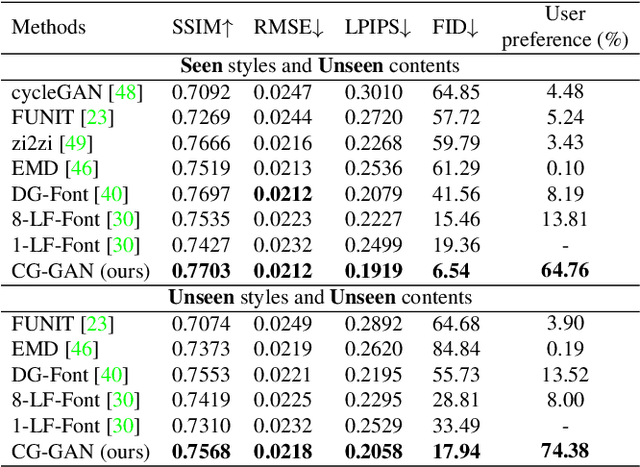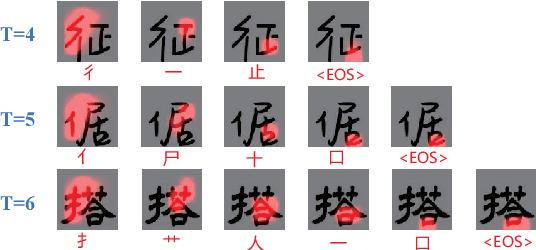Nicholas Yuan
Look Closer to Supervise Better: One-Shot Font Generation via Component-Based Discriminator
Apr 30, 2022



Abstract:Automatic font generation remains a challenging research issue due to the large amounts of characters with complicated structures. Typically, only a few samples can serve as the style/content reference (termed few-shot learning), which further increases the difficulty to preserve local style patterns or detailed glyph structures. We investigate the drawbacks of previous studies and find that a coarse-grained discriminator is insufficient for supervising a font generator. To this end, we propose a novel Component-Aware Module (CAM), which supervises the generator to decouple content and style at a more fine-grained level, \textit{i.e.}, the component level. Different from previous studies struggling to increase the complexity of generators, we aim to perform more effective supervision for a relatively simple generator to achieve its full potential, which is a brand new perspective for font generation. The whole framework achieves remarkable results by coupling component-level supervision with adversarial learning, hence we call it Component-Guided GAN, shortly CG-GAN. Extensive experiments show that our approach outperforms state-of-the-art one-shot font generation methods. Furthermore, it can be applied to handwritten word synthesis and scene text image editing, suggesting the generalization of our approach.
SwinTextSpotter: Scene Text Spotting via Better Synergy between Text Detection and Text Recognition
Mar 19, 2022



Abstract:End-to-end scene text spotting has attracted great attention in recent years due to the success of excavating the intrinsic synergy of the scene text detection and recognition. However, recent state-of-the-art methods usually incorporate detection and recognition simply by sharing the backbone, which does not directly take advantage of the feature interaction between the two tasks. In this paper, we propose a new end-to-end scene text spotting framework termed SwinTextSpotter. Using a transformer encoder with dynamic head as the detector, we unify the two tasks with a novel Recognition Conversion mechanism to explicitly guide text localization through recognition loss. The straightforward design results in a concise framework that requires neither additional rectification module nor character-level annotation for the arbitrarily-shaped text. Qualitative and quantitative experiments on multi-oriented datasets RoIC13 and ICDAR 2015, arbitrarily-shaped datasets Total-Text and CTW1500, and multi-lingual datasets ReCTS (Chinese) and VinText (Vietnamese) demonstrate SwinTextSpotter significantly outperforms existing methods. Code is available at https://github.com/mxin262/SwinTextSpotter.
 Add to Chrome
Add to Chrome Add to Firefox
Add to Firefox Add to Edge
Add to Edge